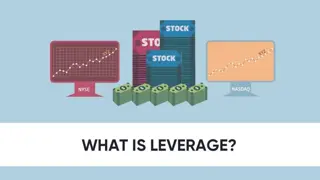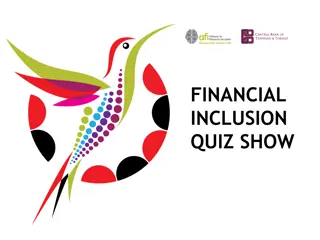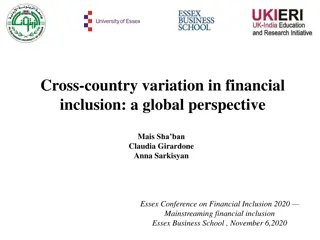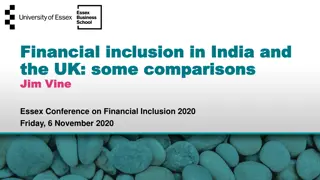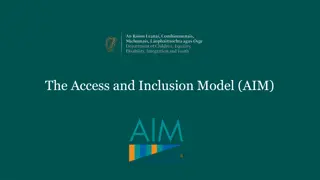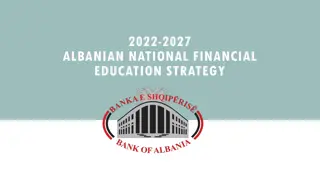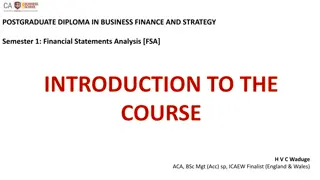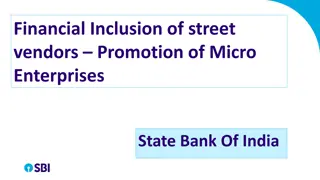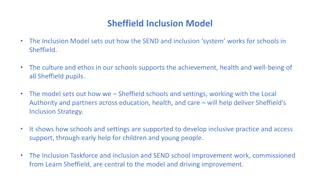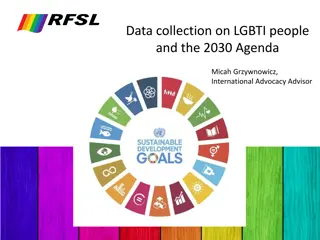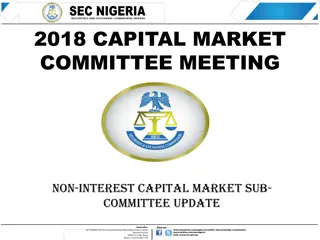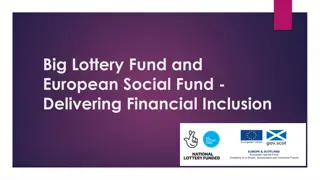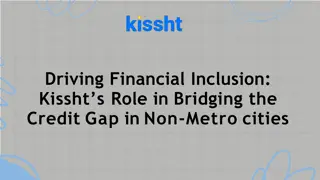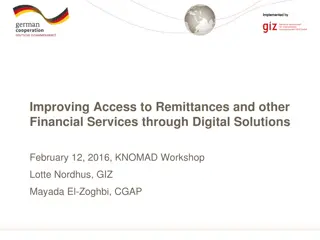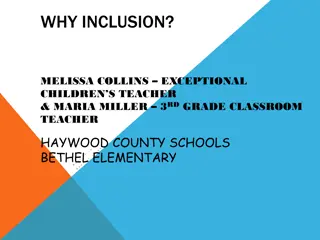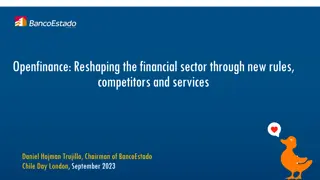Financial Inclusion in India: Challenges and Solutions
Access to banking services in India remains a challenge, with disparities between rural and urban areas. While initiatives like basic banking accounts have been introduced, issues such as poor accessibility and high costs hinder financial inclusion. Traditional banking methods face impediments in serving the weaker sections and low-income groups. The lack of banking technology, reach, and viable delivery mechanisms contribute to financial exclusion. However, there is a growing focus on inclusive growth and the recognition that the poor are bankable.
Download Presentation

Please find below an Image/Link to download the presentation.
The content on the website is provided AS IS for your information and personal use only. It may not be sold, licensed, or shared on other websites without obtaining consent from the author.If you encounter any issues during the download, it is possible that the publisher has removed the file from their server.
You are allowed to download the files provided on this website for personal or commercial use, subject to the condition that they are used lawfully. All files are the property of their respective owners.
The content on the website is provided AS IS for your information and personal use only. It may not be sold, licensed, or shared on other websites without obtaining consent from the author.
E N D
Presentation Transcript
Digital Financial Services and Financial Inclusion by PARAMESWARAN. N Principal Advisor Telecom Regulatory Authority of India (TRAI) 1
Access to banking services: Status 144.8 m households use banking services in India (58.7% of overall households) 91.4 m households in rural areas use banking services (54.4%) 53.4 m households in urban areas use banking services (67.8%) A bank branch in India for a population base of about 12,000 persons about 102,400 bank branches in the country a bank branch in rural India for a population base of about 22,000 persons About 38,000 branches for rural population of 833 m a bank branch in urban India for a population base of about 6,000 persons About 64,400 branches for urban population of 377 m
Financial Inclusion Financial Inclusion: Ensuring access to financial services needed by weaker sections and low-income groups at an affordable cost To achieve financial inclusion, Reserve Bank of India has advised banks to open basic banking no frills accounts for such target groups. More than 100 m no-frills accounts have already been opened. As per the anecdotal evidence 75% of such accounts are lying dormant as low-income households are generally reluctant to access their bank accounts Banks are not available in their neighborhood (Insufficient reach of banking infrastructure) visiting the nearest bank branch means not only expenditure on transport but also the loss of a day s wages.
Impediments to financial Inclusion through traditional banking There is only one branch to serve a rural population of 22,000. Demand Side Impediments poor accessibility of banking services when accessible, the high costs incurred by households to access such services Supply Side Impediments Operating a large number of tiny accounts and micro transactions through bank branches (brick and mortar) is uneconomical. Opening even a small branch entails costs, and commercial banks may simply find this economically non-viable.
Financial Exclusion Why did We Fail? Absence of Banking Technology Absence of Reach and Coverage Absence of Viable Delivery Mechanism Not having a Business Model Rich have no compassion for poor 5
Why Are We Talking of Financial Exclusion Now? Focus on Inclusive Growth Banking Technology has arrived Realisation that Poor is bankable 6
The Indian Way- Multi Agency Approach Financial Stability and Development Council (FSDC) mandated to focus on Financial Inclusion and Financial Literacy Financial Sector Regulators including the Reserve Bank committed to FI Mission Financial Inclusion is a mammoth task- financial services through mainstream financial institutions to 600,000 villages
What has been done so far ICT based Business Correspondent (BC) Model for low cost door step banking services in remote villages . Board approved Financial Inclusion Plans (FIPs) of banks for 3 years, Roadmap to cover villages of above 2000 population Availability of minimum four banking products through ICT model has been ensured . Mandatory opening of 25 % of new branches in unbanked rural centers. Know Your Customer (KYC) documentation requirements significantly simplified for small accounts. Guidelines for convergence between Electronic Benefit Transfer and FIP have been issued.
For Financial Access and Education Imperatives to succeed Collaboration is the key to Success Governments- Central and State ; RBI, IRDA, SEBI, PFRDA, NHB and other regulators ; Banks, Insurance Companies, MFs , other FIs and Intermediaries, Industry Associations ; NGOs and Consumer Organizations ; Global Co-operation Establishing an appropriate Business Delivery Model through the involvement of all stakeholders is critical to making Financial Inclusion a reality Access to financial services and Financial Education must happen simultaneously It must be continuous and must target all sections of the population simultaneously 9
What is the solution? Solution Technology driven service delivery models The best candidate amongst such models is mobile banking. Why? There are about 350 m mobile connections in the rural areas. A large number of mobile subscribers in rural areas do not have access to banking facilities. For both the citizens and the banks transacting through a mobile phone would be about 10 times cheaper than through a bank branch. Demand side: mobile banking will make banking services affordable and immediately accessible. Supply side: mobile banking would be cost effective; it would make small value transactions made by low-income citizens economically viable to the banks. => Mobile telephone can be leveraged to achieve the goal of financial inclusion.
Mobile Banking Goal of Mobile banking To enable funds transfer from an account in any bank to any other account in the same or any other bank on a real time basis Modes of Mobile Banking Interactive Voice Response (IVR) Short Messaging Service (SMS) Wireless Access Protocol (WAP) Stand-alone Mobile Application Clients (Mobile Apps) Unstructured Supplementary Service Data (USSD) Using SIM tool Kit (STK)
Comparison of Various Modes of Mobile Banking Handset Requirement Cost per transaction Ease of Provisioning to the subscriber S. No. Mode 1 IVR Any phone High There is no need for separate provisioning for the subscriber to use these modes. 2 SMS Any phone Medium 3 USSD Any phone Medium GPRS enabled phone The TSP is required to enable the services for the subscriber. 4 WAP Low Mobile Apps The subscriber may have to download a client on his phone. 5 Smart phone Medium Pre-programmed phone The TSP is required to change/ program the SIM of the subscriber. 6 STK Medium IVR, SMS and USSD score high against the yardsticks of ease of provisioning, overall affordability and availability across all mobile handsets. TRAI has mandated that every access provider shall facilitate the banks to use SMS, USSD and IVR to provide banking services to its customers.
Present Status of Mobile Banking in India Some banks in India, such as State Bank of India (SBI) and ICICI Bank have already launched mobile banking services through various modes: SMS, USSD, Mobile App National Payment Corporation of India (NPCI) has already launched Immediate Payment Service (IMPS), an instant, 24X7, interbank electronic fund transfer service through mobile phones and other channels (Internet or ATM). Department of Telecommunication (DoT) has allocated a USSD code *99# to DoFS for mobile banking services through the USSD gateway of NPCI and asked the TSPs to connect to it as per the requirement of service in consultation with NPCI.
Regulatory Interventions for facilitating Mobile Banking TRAI has issued the Mobile Banking (Quality of Service) Regulations. Every TSP shall facilitate the banks to use SMS, USSD and IVR to provide banking services to its customers. TRAI has issued a tariff order for USSD-based mobile banking. Two leading mobile operators have launched m- commerce services.
DBT and Mobile Banking : Tools for Financial Inclusion DBT : A system of transferring cash benefits directly to the poor Brings millions of people into the financial system (Financial Inclusion) Leads to better targeting of beneficiaries Mobile Banking: Use of a mobile phone to carry out banking transactions Cuts down the cost of transaction (Facilitates under- banked citizens) Makes small value transactions made by low-income citizens economically viable to the banks With the facility of mobile banking at the disposal of rural masses, they would be inclined to save and eventually use all financial products relevant to them.
Recent initatives Government s Jan Dhan Yojana scheme 155.8 m bank accounts have been opened under the Pradhan Mantri Jan Dhan Yojana (PMJDY) covering 99.74 per cent of households Guinness Book of World Records has recognised the achievements made under PMJDY. In its citation, the Guinness Book said: "Most bank accounts opened in one week as part of the Financial Inclusion Campaign is 18,096,130 and was achieved by the Department of Financial Services, Government of India from August 23 to 29, 2014." TRAI 16
Challenges Ahead & Future Action Expectations are huge Perceived more as an obligation than a business opportunity Physical capacity of banks including RRBs need to be enhanced Delivery Model - right mix of low cost Brick and Mortar Structures & BCs Need for Intermediate Structure Appropriate Business Model for FI activity for Banks, Technology Providers and BCs Digital and Physical Connectivity Infrastructure necessary for scaling up: Handheld Devices , Cards, Technology Vendors Universal KYC across regulators Extension from banking products to other financial products
Thank You TRAI 18






